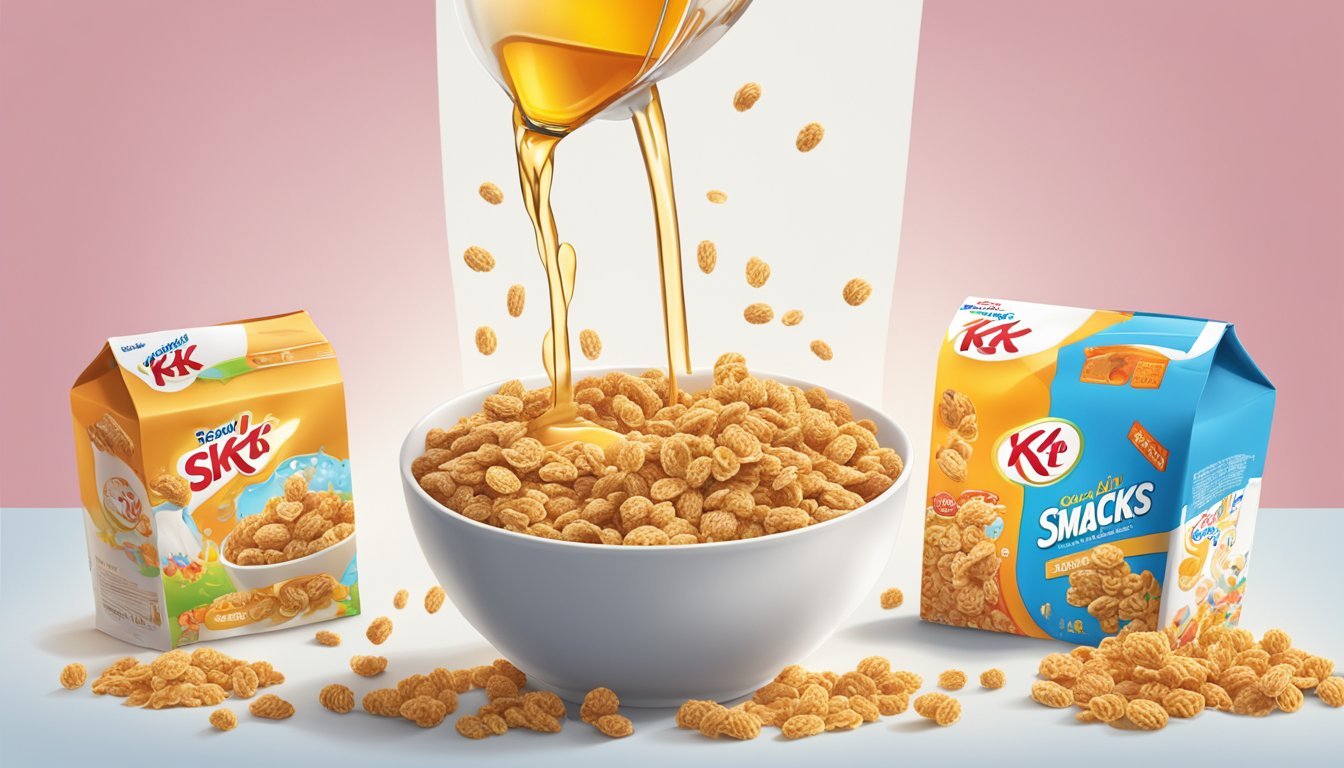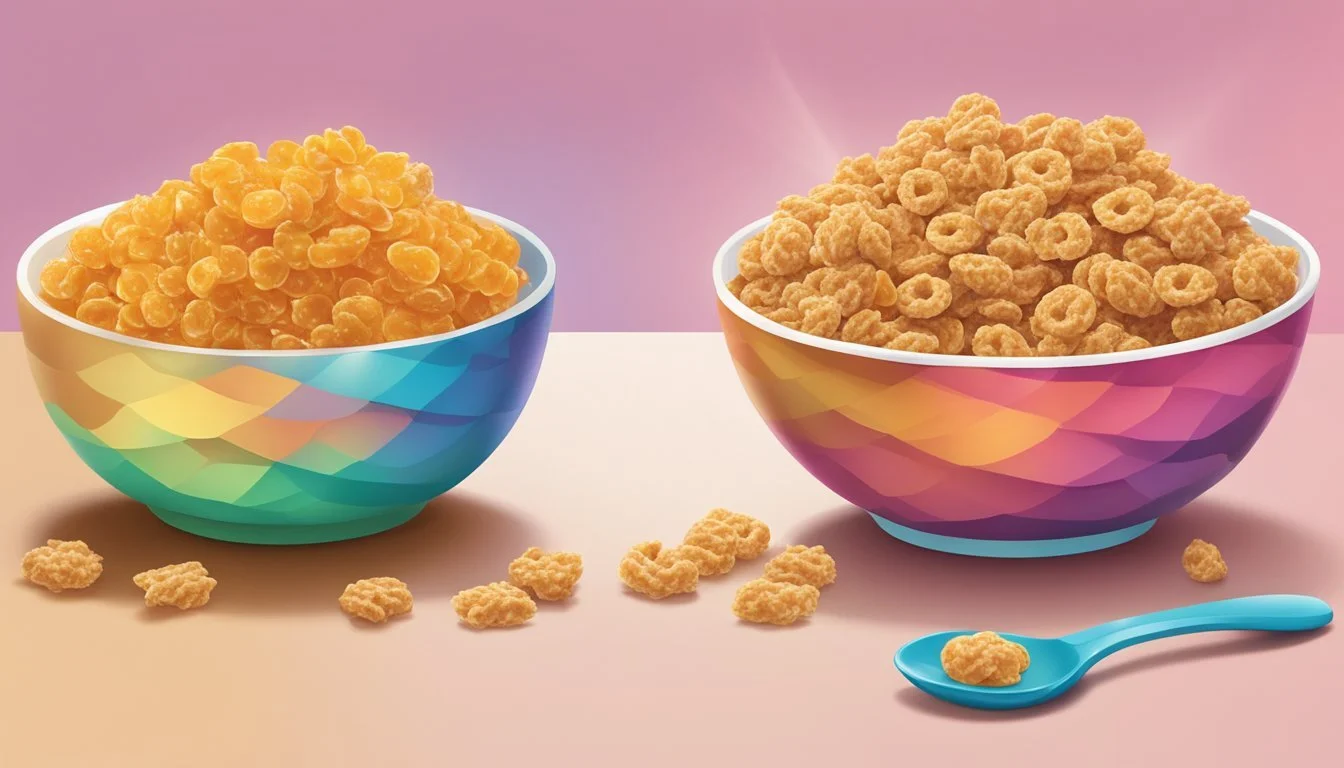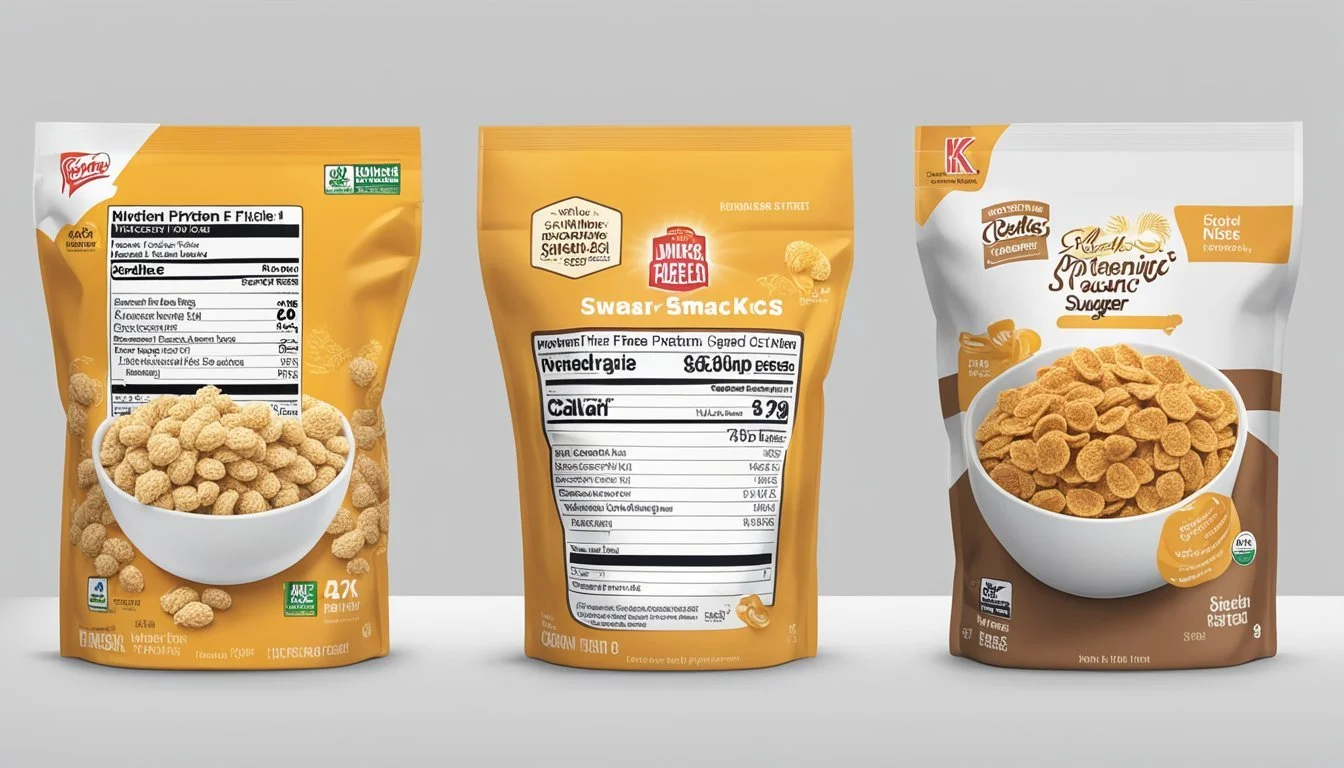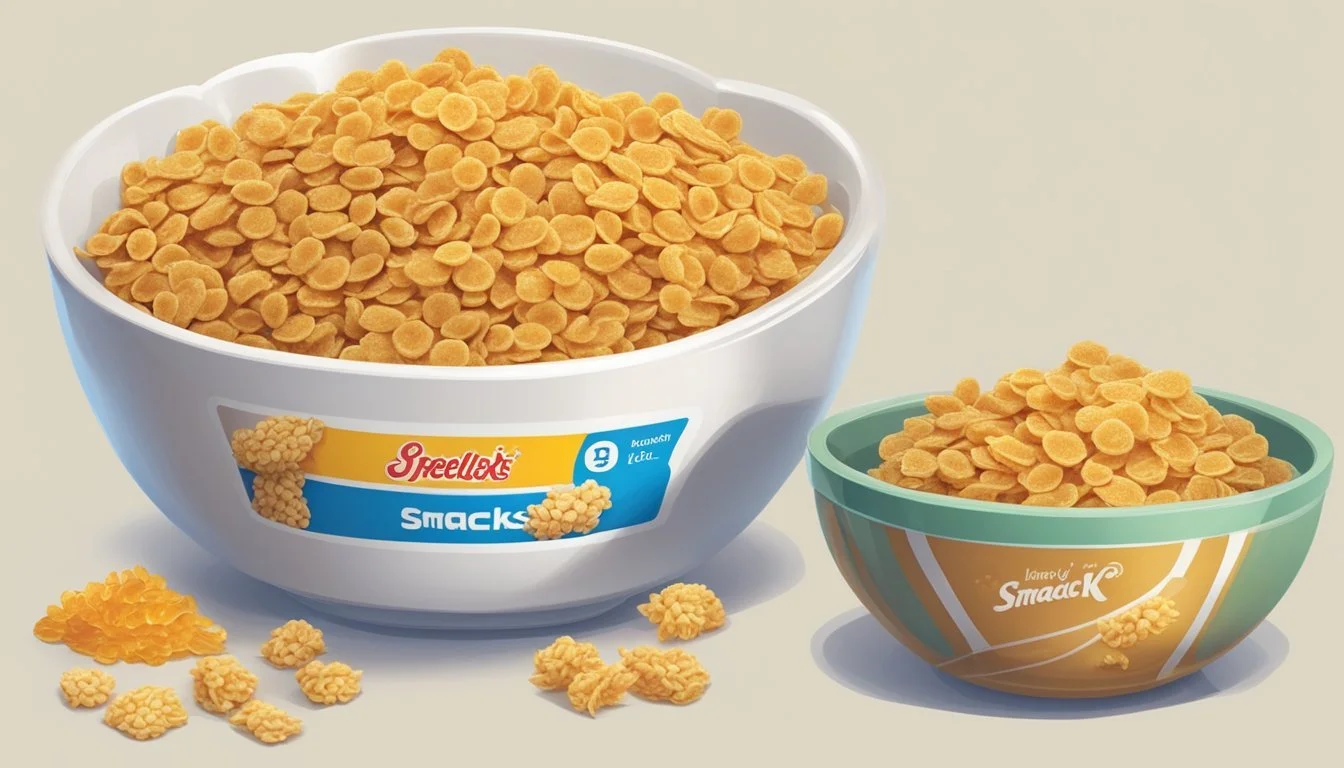Honey Smacks vs Special K
Breakfast Cereal Comparison
This Article is Part of Our Breakfast Cereal Guide with Details on Honey Smacks Nutrition and Special K Nutrition
When debating between Honey Smacks and Special K, health-conscious consumers should consider the nutritional profiles of each cereal. Special K is often recognized for its lower sugar content and higher protein levels, making it a favored choice for those focused on weight management and balanced nutrition. In contrast, Honey Smacks, despite its appealing sweet taste, contains significantly higher sugar levels which might not align with dietary goals for reducing sugar intake.
Calories also play a crucial role. One cup of Honey Smacks delivers 130 calories, with the majority coming from its high sugar content. Comparatively, Special K offers fewer calories per serving, fitting better into calorie-restricted diets. This difference alone can be a deciding factor for people trying to manage their daily caloric intake without sacrificing flavor.
Choosing the right cereal depends on individual health goals. Those aiming for a diet low in sugar yet rich in proteins might favor Special K, while those undeterred by higher sugar content might still find Honey Smacks a delightful option.
Overview of Honey Smacks and Special K
Honey Smacks and Special K are two popular breakfast cereals with distinct characteristics and histories. Both offer unique nutritional profiles and appeal to different consumer preferences.
Honey Smacks: Brand and History
Honey Smacks, a product of Kellogg's, debuted in 1953 under the name Sugar Smacks. This cereal was celebrated for its sweetened puffed wheat flavor. Over the years, the brand underwent several name changes—Honey Smacks being the latest, reflecting a shift towards health-conscious branding.
In terms of ingredients, Honey Smacks contains whole grain wheat, sugar, and honey as primary components. A notable feature is its high sugar content, with around 18 grams per serving. This positions it as a treat rather than a staple breakfast option for some.
Honey Smacks' mascots and packaging have also evolved, with Dig'em Frog being one of the most memorable mascots. The cereal is particularly known for its shiny glaze and toasty flavor, which appeals to those who enjoy sweeter cereals.
Special K: Brand and Evolution
Special K, another Kellogg's brand, was introduced in 1955. Originally marketed towards adults focusing on weight management, Special K has grown to include various flavors and product types. Its core offering remains the original rice and wheat flakes, known for their crisp texture and light flavor.
Nutritionally, Special K is designed to be a healthier option. It typically contains around 16 grams of complex carbohydrates per serving, which provide sustained energy. The brand also emphasizes lower sugar content and enriched vitamins and minerals, making it suitable for a balanced diet.
Over the years, Special K has expanded its product line to include snacks and meal bars, targeting consumers looking for convenience and healthful options. The evolution of its branding highlights a continual focus on fitness and well-being, appealing to health-conscious individuals.
By maintaining a clear nutritional focus, Special K has built a strong reputation in the breakfast cereal market.
Nutritional Profile Comparison
Honey Smacks and Special K vary significantly in their nutritional profiles. Key differences include caloric content, macronutrient distribution, sugar levels, fiber, and essential vitamins and minerals.
Caloric Content and Serving Size
Honey Smacks provides about 130 calories per 36-gram serving, equivalent to one cup. Special K contains approximately 120 calories per 31-gram serving, or one cup. While both cereals have similar calorie counts, the serving sizes slightly differ. This difference in portion size may affect how full one feels after eating each cereal.
Macronutrients: Protein, Carbs, and Fats
Honey Smacks has 0.5 grams of total fat and 1 gram of protein per serving. In contrast, Special K has 0 grams of fat and 6 grams of protein per serving. Honey Smacks offers 31 grams of carbohydrates per serving, whereas Special K has 23 grams of carbohydrates. These differences highlight the varying macronutrient contributions between the two cereals.
Sugar Content and Fiber
Sugar content is notably different between the two cereals. Honey Smacks contains 18 grams of sugar per serving. Special K has just 4 grams of sugar per serving. In terms of dietary fiber, Honey Smacks provides less than 1 gram of fiber per serving, while Special K offers 1 gram of fiber.
Vitamins and Minerals
Both cereals are fortified with essential vitamins and minerals. Honey Smacks contains vitamins like Vitamin C, iron, and folic acid. Special K is enriched with more diverse vitamins and minerals, including Vitamin A, Vitamin D, Vitamin C, and iron. This fortification makes both cereals valuable for micronutrient intake, though their specific contents vary.
Sodium and Potassium
Sodium content also varies; Honey Smacks contains 45 mg of sodium per serving, while Special K has 220 mg per serving. Potassium is another critical mineral, with Honey Smacks providing 50 mg per serving, and Special K offering 90 mg. These mineral differences may influence the choice based on dietary needs like sodium or potassium intake.
Ingredient Analysis
This focuses on comparing Honey Smacks and Special K in terms of ingredients, sugars, sweeteners, and allergens. Each aspect will help readers make an informed decision about their dietary choices.
Main Ingredients and Varieties
Honey Smacks
Main Ingredients: Puffed wheat, sugar, honey, corn syrup, and caramel color.
Varieties: Primarily the original formula.
Special K
Main Ingredients: Rice, wheat gluten, sugar, defatted wheat germ, and salt.
Varieties: Includes Original, Red Berries, Vanilla Almond, and Protein.
While Honey Smacks emphasize sweetness with honey and sugar, Special K offers a simpler base with rice and wheat. Both cereals include added vitamins and minerals for nutritional fortification.
Added Sugars and Sweeteners
Honey Smacks
Sugar Content: Approximately 15 grams per 36-gram serving.
Sweeteners: Sugar, honey, and corn syrup contribute to its high sugar content.
Special K
Sugar Content: About 4 grams per 31-gram serving for the Original variety.
Sweeteners: Mostly sugar, with some variations using artificial sweeteners or natural alternatives like honey.
Honey Smacks has significantly higher sugar content compared to Special K. This high sugar level can be a concern for those monitoring sugar intake.
Presence of Allergens and Dietary Restrictions
Honey Smacks
Allergens: Wheat.
Dietary Considerations: Contains gluten, not suitable for gluten-free diets.
Special K
Allergens: Wheat, potentially soy in certain varieties.
Dietary Considerations: Gluten present, with some varieties offering higher protein content but none are gluten-free.
Neither cereal is suitable for those with gluten intolerance. Special K, depending on the variety, may offer additional options for protein but still falls short on gluten-free choices.
Health Impact
Honey Smacks and Special K differ significantly in their nutritional profiles, impacting blood sugar levels, weight management, and dietary suitability. Both cereals have unique characteristics that cater to different health needs.
Effect on Blood Sugar and Glycemic Index
Honey Smacks contains a high sugar content, leading to a higher glycemic index. This rapid increase in blood sugar levels may be disadvantageous for those managing diabetes or insulin resistance.
Special K has lower sugar content compared to Honey Smacks. It provides complex carbohydrates, resulting in a more moderate effect on blood sugar levels. The glycemic index of Special K is generally lower, making it a better choice for blood sugar control.
Role in Weight Management
Special K promotes weight management due to its lower calorie content and the presence of complex carbohydrates which provide sustained energy. It includes more fiber, aiding in satiety and reducing overeating.
Honey Smacks is less effective for weight management because of its high sugar content. The quick spike in blood sugar and subsequent crash can lead to increased hunger and potential weight gain. Its lower fiber content does not contribute as significantly to fullness.
Suitability in Various Diets
Special K is suitable for various diets such as low-fat, low-carb, and low-calorie regimens. It has a moderate amount of carbohydrates and is relatively low in fat, making it versatile for those on restrictive diets.
Honey Smacks, with its high sugar and carbohydrate content, may not fit well into low-carb or low-glycemic index diets. However, it may be incorporated into a diet for those who need quick energy in a less nutrient-dense form. It is less ideal for low-fat and low-calorie diets due to its nutritional composition.
In conclusion, while both cereals offer different health benefits, the choice between Honey Smacks and Special K depends largely on individual dietary goals and health needs.
Market Position and Consumer Preferences
Honey Smacks and Special K hold unique positions in the cereal market, each appealing to different consumer segments. This section will explore their popularity, price points, and targeted advertising strategies to understand their market dynamics.
Popularity and Consumer Ratings
Honey Smacks is often considered a classic kids' cereal known for its sweet taste. Despite enjoying a loyal following, concerns over its high sugar content have affected its popularity among health-conscious consumers.
Special K, on the other hand, has positioned itself as a health-focused brand. It receives favorable ratings for its low-calorie and nutrient-rich offerings, resonating well with adults seeking healthier options. Both cereals occupy distinct niches in the cereal aisle, each garnering positive reviews from their respective audiences.
Price Comparison
When comparing prices, Honey Smacks tends to be slightly more affordable than Special K. Based on a recent comparison, Special K Original averages around $5.74 per 18-ounce box, whereas Honey Smacks is priced similarly, though often a bit lower.
Retailers frequently offer promotions on both, but Special K's premium positioning allows it to maintain a higher average price. Factors such as packaging and marketing contribute to these price differences, reflecting each brand's value proposition.
Target Audience and Marketing
Honey Smacks targets primarily children and families, emphasizing fun and flavor in its marketing campaigns. The manufacturer leverages bright packaging and engaging characters to attract young consumers.
In contrast, Special K focuses on adults, particularly women. Its marketing emphasizes health benefits, such as weight management and high nutritional value.
The messaging is clear and straightforward, appealing to health-conscious individuals who prioritize balanced diets. These strategies highlight the brands' efforts to maintain relevance and appeal within their chosen demographics.
Alternative Cereals and Choices
With numerous cereal options available in the market, it is essential to evaluate alternatives to Kellogg’s Honey Smacks and Special K. Below, we compare other Kellogg’s products, choices from different brands, and tips for selecting healthier cereals.
Comparing to Other Kellogg’s Products
Kellogg’s has a variety of cereals, each offering unique nutritional benefits. Compared to Honey Smacks, Kellogg’s Frosted Flakes has higher sugar content, while Kellogg’s Raisin Bran offers more fiber due to the added raisins and whole grain wheat.
For a chocolatey twist, Special K Chocolatey Delight may appeal to those with a sweet tooth but looking for a high-fiber option. For a simplified grain choice, Rice Krispies is lower in sugar and can be more suitable for individuals managing their sugar intake.
Options from Other Brands
Several brands offer cereals that can be healthier or offer different flavors. Honey Nut Cheerios and Honey Bunches of Oats, though sweetened, provide vitamins and minerals beneficial for heart health.
For chocolate lovers, Cocoa Pebbles offers a strong cocoa flavor and a crunchy texture. Cereals like Cinnamon Toast Crunch, Cookie Crisp, and Lucky Charms provide fun and variety but often come with higher sugar levels. Health-conscious consumers might prefer Kashi cereals, known for wholesome ingredients and lower sugar content.
Choosing Healthier Cereal Options
When selecting a healthy cereal, consider whole grain content and low added sugars. Look for cereals with high fiber content like Kellogg’s Raisin Bran or Honey Bunches of Oats.
Check the ingredient list to avoid artificial additives. Cereals like Kashi and Special K often contain fewer artificial ingredients. Mixing cereals can be a strategy; blend a sweeter cereal with a plain one for balance. Adding fresh fruits like berries can also enhance nutritional value without added sugars.







